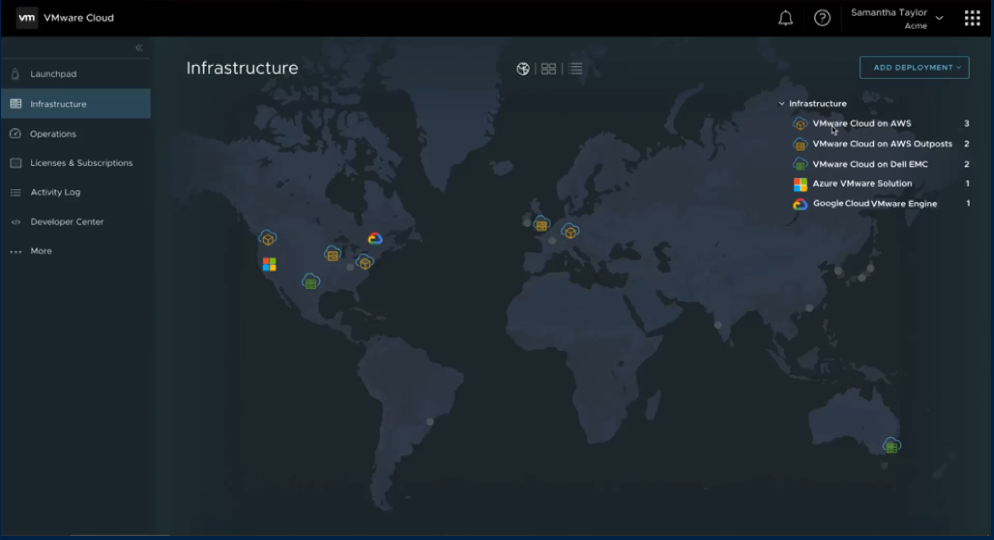As organizations try to find a faster time to value as they migrate their applications to the cloud, they are often challenged by the infrastructure incompatibility between their various clouds and the struggle to find the skill set to develop, support and manage each cloud environment. In the introduction to this series, it was noted that each cloud environment is a silo and requires customers to invest in resources to support each one. Businesses can choose to invest in their existing employees by bringing them up to speed to support a cloud, or they can look outside the company and bring on new employees with the skill set to support the cloud. In either case, these cost time and money, decreasing their time to value and slowing their app migration. This article will focus on how VMware Cross-Cloud services can help increase an organization’s time to value in its cloud journey.

One of the five key abstractions mentioned in the 10 Key Multi-Cloud Strategies: Introduction article was infrastructure, specifically Cloud and Edge Infrastructure. Abstracting the underlying cloud infrastructure in an organization’s multi-cloud environment allows them to treat disparate clouds as one distributed pool of resources. In some ways, this can be compared to how VMware got its start with virtualization. Initially, customers could utilize ESX to abstract the underlying hardware and run multiple virtual machines on a single server. A collection of ESX servers from different hardware vendors could then be brought together and managed by vCenter Server. This allowed customers to use a single tool to manage any server across their entire data center. If the same approach is applied to the multi-cloud problem, we can provide a layer of abstraction that sits above the clouds and give us a single set of tools to manage the entire multi-cloud environment.
This layer of abstraction is VMware Cloud and can be implemented on-premises as VMware Cloud Foundation or leverage one of VMware’s Cloud Providers for this service. VMware has worked with all the major public cloud providers to port it natively to run in their environment. So, what does having this VMware Cloud abstraction layer mean for an organization, and how can it help speed up their time to value?
- Infrastructure – Now that there is a common foundation among all the clouds, migrating applications becomes a simple process. Once the two clouds are connected, a tool like VMware vMotion or VMware HCX can simply move the app from Cloud A to Cloud B, often with zero downtime. Without the abstraction layer that VMware Cloud provides, an application will need to be refactored before it’s moved from cloud to cloud. Some VMware customers are using this to quickly evacuate a data center, accelerating a process that would normally take months, if not years, depending on the number of applications.
- Management and Operations – The same skill sets and tools can be used across all clouds. For VMware customers already leveraging the VMware Aria (formerly vRealize) suite of products on-premises, these same tools can be used to manage the entire multi-cloud environment. What’s more, the same operational procedures that were previously created can still be utilized.
- App Development – Because Kubernetes is supported on the same platform, developers can utilize the same development tools they always have, and their applications can be deployed to any cloud. Kubernetes is built into the VMware Cloud platform and lets customers run virtual machines, containers, and Kubernetes clusters on a unified platform.
- Security and Networking – Much like Management and Operations, the same skill set, policies, and procedures currently in place in the private cloud can now be leveraged in any cloud. This also allows for securely connecting applications across clouds and complete visibility across the entire stack, from the infrastructure layer all the way to the device.

VMware Cloud helps organizations find the smarter way to cloud by giving them a distributed pool of resources across its multi-cloud environment to deploy any application, whether a virtual machine or container. It also provides a single view into managing the environment, and security policies can be set consistently regardless of where the workloads live. It keeps the developers happy by letting them leverage their existing tools while letting you deploy their applications anywhere.
In the next installment, we’ll look at assessing your applications and developing a strategy for the best way forward. If you remember from the Assessing Your Cloud Readiness blog, having a well-thought-out plan is critical; it all starts with applications.



